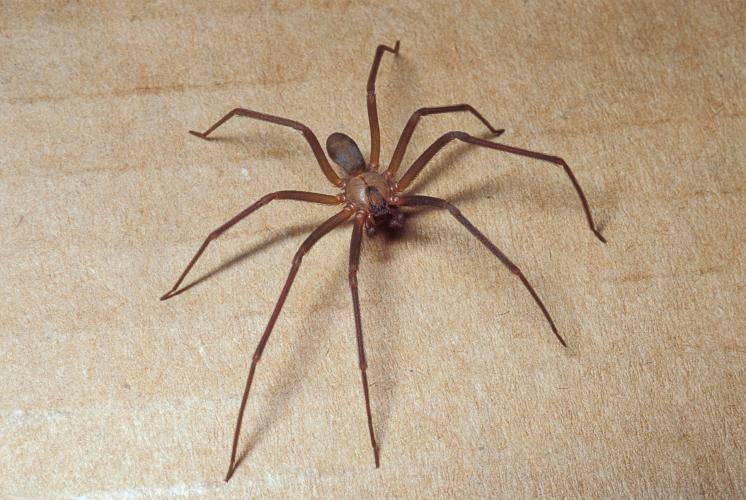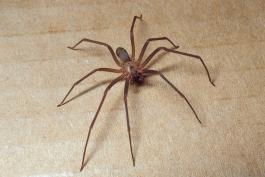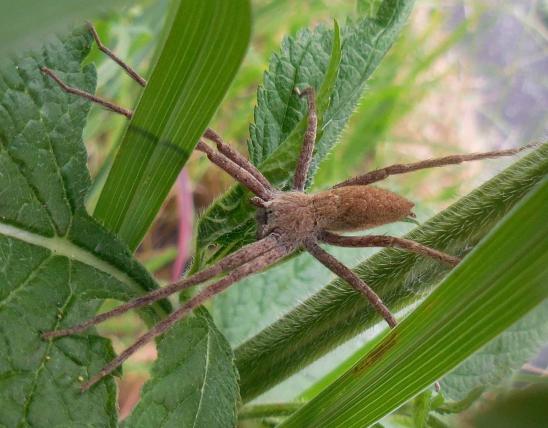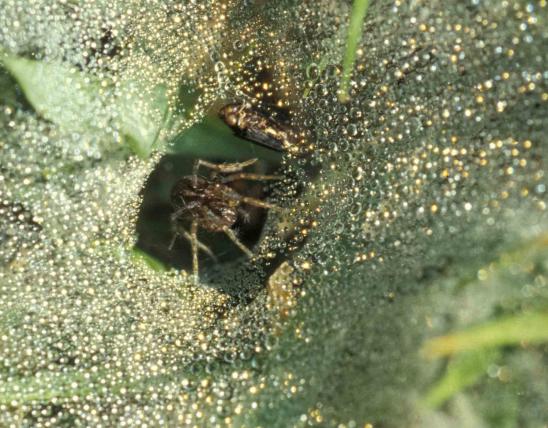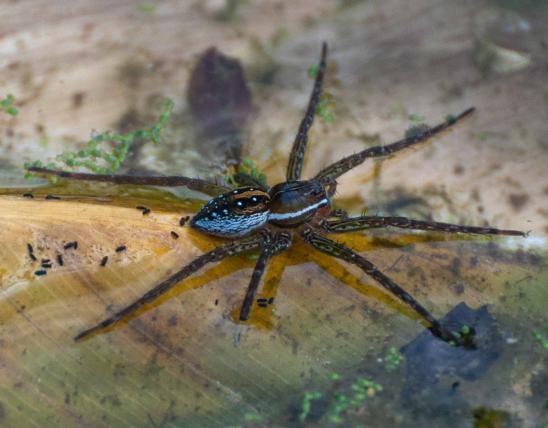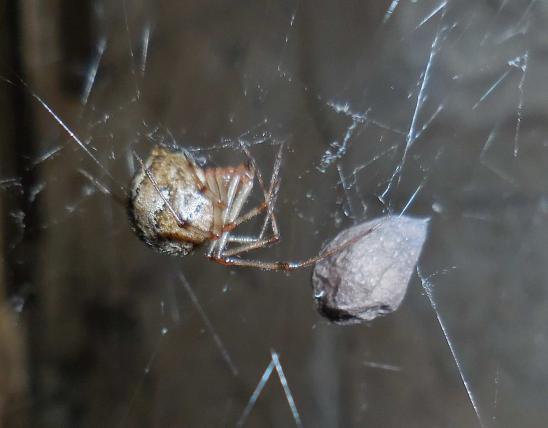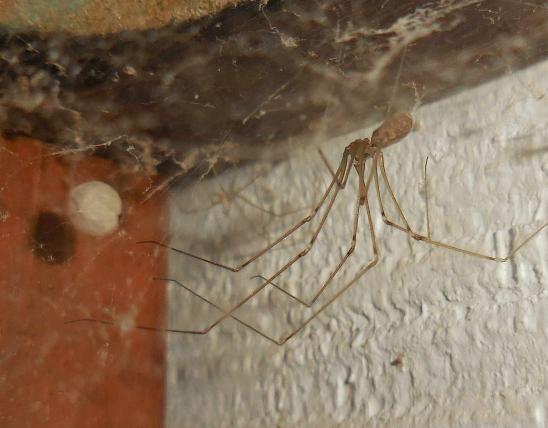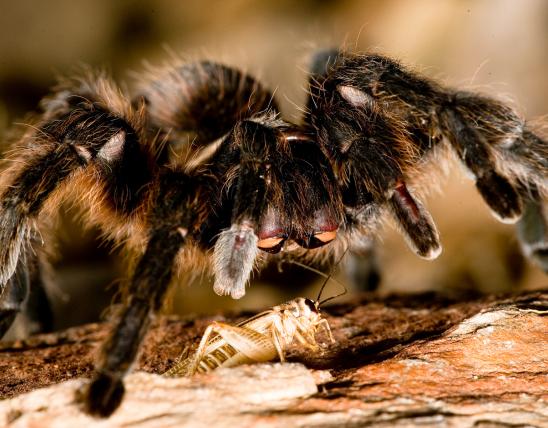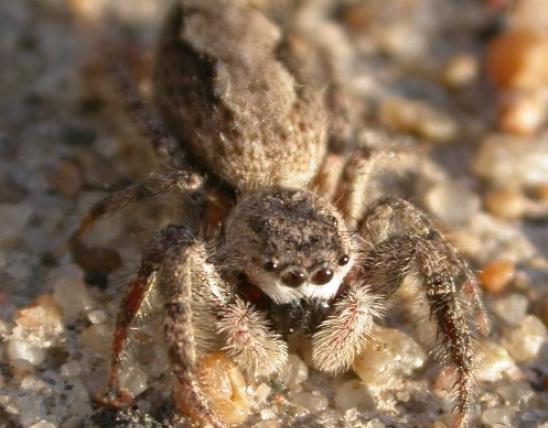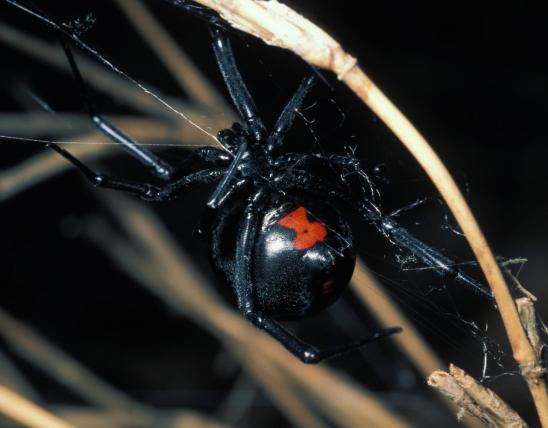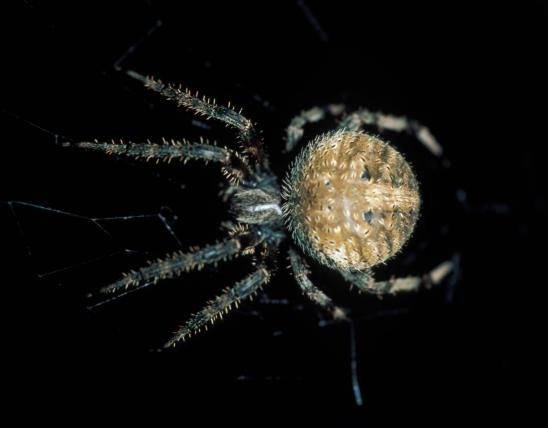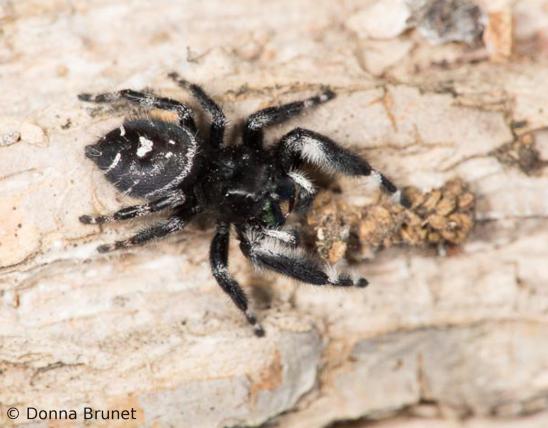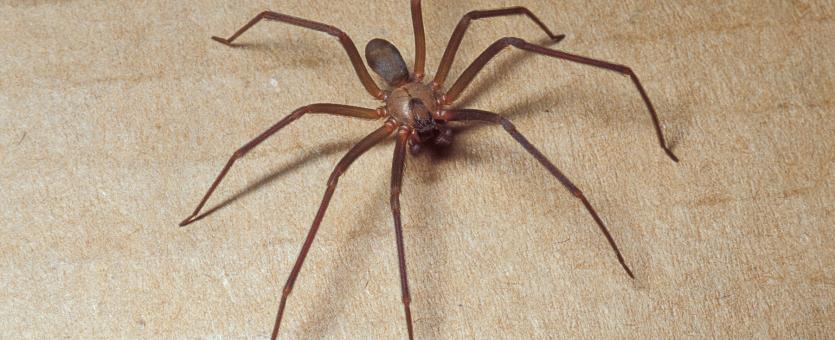
The name “violin spider” describes a characteristic marking on the brown recluse: there is a violin-shaped patch on the broad, almost heart-shaped cephalothorax (the head, as opposed to the abdomen). The overall color is usually a grayish yellow-brown, the oblong abdomen covered with fine gray hairs. The legs are darker than the body and are long and slim. Females are larger then males. The webs, associated with egg sacs, are small, irregular, and untidy. These spiders are usually seen walking or running around, not in a web.
Length: females to ¼ inch, not counting legs; including legs in a typical pose, they are about 1 inch long.
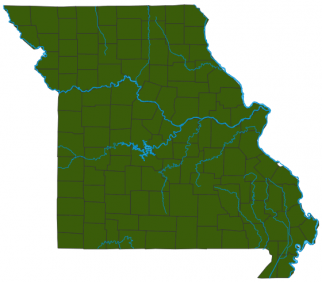
Statewide. Though it has a southern distribution naturally, this species has gradually spread northward and is now presumed to occur statewide, indoors.
Habitat and Conservation
The name “recluse” describes this spider well. It commonly hides in little-used drawers, closets, attics, and basement areas, and behind baseboards and furniture. They cannot climb smooth surfaces and are often found trapped in bathtubs and sinks. Their habit of hiding among packed-away garments and towels creates a common situation for human bites, when a person dons clothing from storage without inspecting or shaking it out first. In nature, they live under and in crevices of rocks.
Food
In diet, brown recluses are little different from other spiders. They eat small insects and other spiders. As a running spider (not a spider that uses webs to catch prey), a recluse chases down prey like a wolf. The purpose of their venom is to subdue their prey. In fact, brown recluses cannot easily bite humans unless they are pressed against our skin (as when they are suddenly trapped between a garment and our bodies, or if they are exploring our bed sheets and we roll on top of them).
Status
Common and sometimes abundant.
The severity of a brown recluse bite may vary. In most cases, a temporary small red mark on the skin is the only result and is barely noticed. In other cases, the bite becomes an ulcerated wound that can last for months, eventually healing and leaving a sunken area of scar tissue. In very rare cases, people may suffer systemically (throughout their body) with fever, chills, rash, dizziness, and/or nausea.
Because of their nocturnal and reclusive nature, brown recluses are rarely seen, but when you see one, there are probably many more. Their secretiveness is helpful in a way, because their shyness minimizes our encounters with them.
If you think you have a brown recluse problem in your house, call a licensed exterminator for advice. Because spiders walk on tiptoes, they generally have little contact with pesticides applied to surfaces. Also, eliminate long-neglected, undisturbed, unused storage areas in your home.
Life Cycle
Brown recluses do not live in webs but lead a nomadic hunter’s life and can live for several years. Females deposit eggs on a surface and spin a silken sac around them.
Human Connections
When bitten, humans rarely notice at first, but swelling, redness, and tenderness may occur at the site within about 8 hours, possibly (but rarely) followed by chills, nausea, or fever. Several days later, the skin at the bite may ulcerate, forming a deep open wound that is slow to heal and susceptible to infection. If you experience such a wound, see a doctor. Different people may react differently to spider bites. Death from brown recluse bites is very unlikely.
Though the bites of brown recluses are almost never fatal, they can be disfiguring. Pets can suffer from recluse bites, too. The exterminating industry is built in large part upon the presence of brown recluses and other undesirable creatures in and around our homes.
Ecosystem Connections
Like all spiders, in the wild, brown recluses help decrease the populations of insects and other spiders. They do this also within the “habitat” of our homes, where they consume many of the other creepy-crawlies that hide in our basements, closets, and attics and behind bookcases and furniture.
To put venom into perspective, keep in mind that nearly all spiders are venomous, delivering bites to subdue and digest their prey. Several insects, such as assassin bugs, backswimmers, and robber flies, use venomous digestive saliva in a similar fashion, and some, such as bees, use a venomous sting for defense. Wasps use their stings both to capture prey for their offspring (many wasps hunt spiders) and secondarily for defense. Brown recluses, however, are one of the few North American spiders whose bites can cause problems for people.
